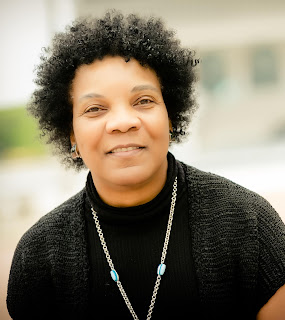ISBN-10: 1793389004
ISBN-13: 978-1793389008
Independently published
Paperback: 276
pages
January 8, 2019, $13.99
Genre: Health/nutrition
Also
available for Kindle
Introduction
These days, there’s a lot of interest in your genes.
Multiple services offer to trace your genetic background for you and tell you
where the genes you’ve inherited came from. Medical companies race to improve
DNA testing that will indicate your vulnerability to physical disorders and
identify mutations in your genes that may cause illness or disease.
There’s also a growing interest in the study of mechanisms
that can switch genes on and off. Although you can’t control your genes directly,
you can have some control over which genes are dormant and which are active.
That science is called epigenetics.
The word epigenetics was coined back in the 1940s to refer
to the influence of genetic processes on human development. It took a while for
the topic to attract much attention but in 2006, over 2,500 articles about
epigenetics were published.
Then interest grew. By 2010 - the year that I brought out my
book Happiness Genes: Unlock the Positive
Potential Hidden in your DNA – that number jumped up to over thirteen
thousand publications. Unlike many of those, my books have always been designed
to make topics clear to everyday readers.
In 2012, the International
Journal of Epidemiology declared “Epigenetics: the next big thing.” By
then, I had published Obesity Genes and
their Epigenetic Modifiers, offering applications for the new discoveries.
Interest continued to grow, and in 2013, there were over
seventeen thousand publications on topics related to epigenetics. In 2015, I
published Behavioral Genes: Why We Do
What We Do and How to Change based on the abundant research at that time.
Now new research findings regarding human lives and cultures
have led to this new book, Epigenetics
and Genetic Happiness How to Increase Your Well-Being. We’ll look into ways
that you can actually bring about changes in your biological mechanisms to
shape the sense of well-being that’s so basic to your personal happiness.
James D. Baird, Ph.D. has more than forty
years of experience as a successful inventor and graduate engineer. A pioneer
in the new science of ultrasonics, Baird has earned several patents and as a
successful entrepreneur founded Dynasonics, Inc. a design and manufacturing
company of ultrasonic sensors and computers.
His inventor background instilled in him a persistent curiosity about how things work, translating from mechanisms to life. His passion for understanding the bioengineering that makes us human combined with his religious and spiritual beliefs has led him to research the subject of happiness for more than 20 years, and in the process, earned him a Ph.D. in Natural Health.
As a natural health advocate with an inventor's curiosity, he was intrigued by the paradox that "diets don't work." In an effort to uncover the reasons and provide an answer, he wrote his third book, The Mindful Meals Diet (iUniverse 2007), which explained how genetic factors are the basis of unhealthy eating habits that lead people to become overweight. His program incorporated self-hypnosis and mind/body strategies to develop healthy eating habits (www.mindfulmealsdiet.com).
From his research of genetics in diet evolved the understanding that humans have a spiritual nature and that faith is genetic. This confirmed his belief that the expression of spirituality is genetically motivated and results in natural happiness. Results from researching genetic behavior and the new science of epigenetics inspired Baird to write the HAPPINESS GENES.
Intrigued by people's behaviors, Baird used his 20 years of researching in behavioral genetics to write BEHAVIORAL GENES- why we do what we do and how to change. [published 2/13/15] This book describes the genetic roots of our most common behaviors providing understanding of why we do what we do. While other books note that the genetic heritability component of behaviors is unchangeable, Baird shows that genes aren't destiny. Using evidence that epigenetic modalities, such as: meditation, mindfulness, and cognitive therapy can modify behaviors, practical therapies are described in the last chapter of the book.
His inventor background instilled in him a persistent curiosity about how things work, translating from mechanisms to life. His passion for understanding the bioengineering that makes us human combined with his religious and spiritual beliefs has led him to research the subject of happiness for more than 20 years, and in the process, earned him a Ph.D. in Natural Health.
As a natural health advocate with an inventor's curiosity, he was intrigued by the paradox that "diets don't work." In an effort to uncover the reasons and provide an answer, he wrote his third book, The Mindful Meals Diet (iUniverse 2007), which explained how genetic factors are the basis of unhealthy eating habits that lead people to become overweight. His program incorporated self-hypnosis and mind/body strategies to develop healthy eating habits (www.mindfulmealsdiet.com).
From his research of genetics in diet evolved the understanding that humans have a spiritual nature and that faith is genetic. This confirmed his belief that the expression of spirituality is genetically motivated and results in natural happiness. Results from researching genetic behavior and the new science of epigenetics inspired Baird to write the HAPPINESS GENES.
Intrigued by people's behaviors, Baird used his 20 years of researching in behavioral genetics to write BEHAVIORAL GENES- why we do what we do and how to change. [published 2/13/15] This book describes the genetic roots of our most common behaviors providing understanding of why we do what we do. While other books note that the genetic heritability component of behaviors is unchangeable, Baird shows that genes aren't destiny. Using evidence that epigenetic modalities, such as: meditation, mindfulness, and cognitive therapy can modify behaviors, practical therapies are described in the last chapter of the book.

















